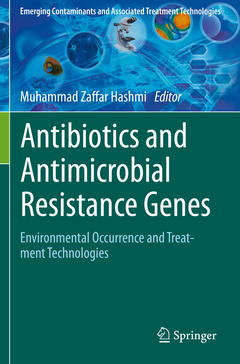Description
Antibiotics and Antimicrobial Resistance Genes, 1st ed. 2020
Environmental Occurrence and Treatment Technologies
Emerging Contaminants and Associated Treatment Technologies Series
Coordinator: Hashmi Muhammad Zaffar
Language: English
Subjects for Antibiotics and Antimicrobial Resistance Genes:
Publication date: 04-2021
Support: Print on demand
Publication date: 04-2020
456 p. · 15.5x23.5 cm · Hardback
Description
/li>Contents
/li>Biography
/li>Comment
/li>
This volume summarizes and updates information about antibiotics and antimicrobial resistance (AMR)/antibiotic resistant genes (ARG) production, including their entry routes in soil, air, water and sediment, their use in hospital and associated waste, global and temporal trends in use and spread of antibiotics, AMR and ARG. Antimicrobial/antibiotic resistance genes due to manure and agricultural waste applications, bioavailability, biomonitoring, and their Epidemiological, ecological and public health effects. The book addresses the antibiotic and AMR/ARG risk assessment and treatment technologies, for managing antibiotics and AMR/ARG impacted environments
The book's expert contributions span 20 chapters, and offer a comprehensive framework for better understanding and analyzing the environmental and social impacts of antibiotics and AMR/ARGs. Readers will have access to recent and updated models regarding the interpretation of antibiotics and AMR/ARGs in environment and biomonitoring studies, and will learn about the management options require to appropriately mitigate environmental contaminants and pollution. The book will be of interest to students, teachers, researchers, policy makers and environmental organizations.
Updates information on antibiotics and AMR/ARG production and entry routes in the environment
Provides a risk assessment analysis of antibiotic resistance genes
Offers strategies and bioremediation and treatment technologies for environment management




